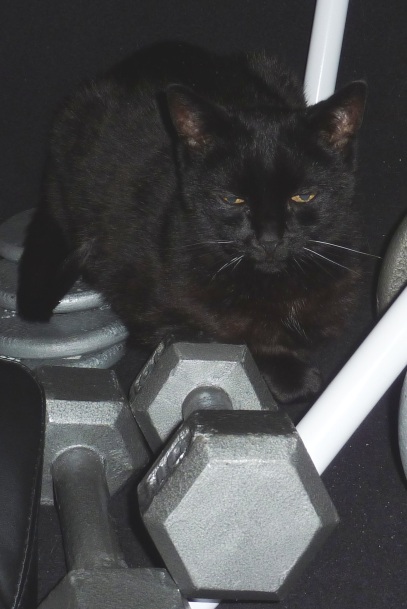No one signs their name anymore. Not really. We make a half-assed squiggle with our finger on a digital screen. We scribble our name on documents, the letter collapsing and falling over.
I’m the worst at this. Except when I went to vote by mail. Then my signature was pristine, perfect, and crisp. I wrote it with care because it mattered. Because I knew someone was watching.
You might think that how you sign your name doesn’t matter. After all, the card company isn’t going to check it. The barista or waiter isn’t either. Even when I write “check ID” on the back of my cards almost no one asks.
And as a stand-alone occurrence, it probably doesn’t matter. After all I’m not singing the declaration of independence or the constitution.
Recently I started to notice this trend in myself, towards convenience, speed, and efficiency. It started to bother me. Because my life, your life is not a thing to be dispensed with, to be scribbled off.
Your life is art. Or it can be.
Last month I had a virtual date. At first, I thought I’d order us dinner. Maybe get some flowers delivered to her house. But then I realized that I could make art with it. So I made a website. Nothing too complex, it only took me an hour or so.
The website guided us through the date. I gave us a structure. The date itself became a form of art. I shared it with a couple of other people who were helping me out and they were both moved by it.
Over New Year’s weekend I went hiking. And the conversation I shared on that hike was art. It was about couples who go hiking. We spent a few moments together laughing and taking in the scenery. We weren’t concerned with the mileage or exactly how fast we wanted to go. The hike itself became art.
When I cook, I feel into the food. I cut the onions, making sure the carrots look uniform. I try to add different colors of sweet potatoes. I think about a garnish. So that when the dish is done, there’s texture, shades, and so much more. The food itself is art.
This is what it means to make art with life. Sometimes it’s dramatic, a bold gesture, a full on production. And sometimes it’s incredibly subtle, like how you sign your name on a digital pad.
Making art with your life is possible, here’s how.
1) Notice what you don’t notice:
There are places where all of us take things for granted. The way our love kisses us in the morning. The way you make your coffee. The way you brush your teeth. These places are rich repositories and opportunities to create art with your life.
Your relationships are filled with small moments of unconsciousness and routine. So simply start noticing what you don’t notice, what you step over, and what you take for granted.
2) Look at it from a new perspective:
There are things we get through and there are things we create through. We get through waiting for the plane to board. We create through writing a birthday card for someone we love. We get through washing the dishes. We create through cooking a special meal as a treat for ourselves.
Everything that is a ‘get through’ moment can become a ‘create through’ moment.
I learned this really well when I worked in the kitchen at the Zen Monastery I lived at for two years. In kitchen practice everything we did was infused with mindfulness and compassion. We cut carrots with love. We stirred pots with deep presence.
I swear you could taste it in the food. And you could certainly feel it as you cooked.
What we were doing was no different than what is done in commercial kitchens all over the world, but it felt different.
We took a perspective of wonder, curiosity, and attention to what we did.
After you notice what you didn’t notice, try to look at it differently. See if you can see it as an invitation into creation. Ask yourself how could I create through this?
3) Answer the question “How could I create through this?”
The next step is simple. You answer the question, with an I could.
I could write poems at the bus stop.
I could connect with my Uber driver.
I could draw a small masterpiece on the coffee shop Ipad.
I add a garnish to my dinner.
I could really connect with my beloved as we say goodbye.
I could be fascinated by my child’s day even if it’s so simple.
You don’t have to do all of these things. You don’t have to do any of them. This isn’t about finding what you ‘should’ do or the ‘right thing’ to do. That’s not the nature of art.
This isn’t painting by numbers.
You’re just looking at what you COULD do. If making art with your life is new, you can spend some time here. Just dreaming. Thinking of things to try. You can’t stay here, but it’s a good start because you’re opening up new possibilities for yourself.
Slowly carefully lovingly let yourself be open to what’s possible.
4) Try something . . . anything
Once you’ve gotten a few ideas one will call to you. For me, the one that scares me or lights me up and turns me on the most will speak to me. So now it’s time to try it out.
I’ll be honest at first you’re going to be a bit awkward and clunky. You may get some weird looks, but you should try it anyway. You’ll realize you can survive being a bit silly and absurd. And often it will go way better than you can imagine.
Not all art is a success, but that’s not the point of art. The point of art is to create something new, to express something, and to allow that something to blossom and wither in a moment.
So try something. It’s ok if it’s not the boldest thing, it’s ok if it is super bold, but just try.
5) Learn and refine
Now that you’ve created something and put it into the world, refine it. Draw a different kind of sun on the coffee shop Ipad. Add a smile to your present goodbye kiss. Ask your kiddo about their day at dinner instead of when they get home. Try rosemary instead of thyme as the garnish.
Artists don’t just paint one painting and stop. They create and recreate. They try again, they add something else, they take something away.
The reason why learning and refining are so important is that they help you move from a moment of expression to a practice of it. Instead of making art an event—like an anniversary dinner—it becomes part of the ritual of your life.
This is the final step and it is the one you have to keep making again and again.
I realized that you might be wondering why you’d want to do this?
Why not just have a nice dinner with your partner once a year?
Why not just squiggle my name on an Ipad?
For me, the reason is simple. Life is the most rare and precious commodity you have. Especially your life. You’ve only got so many days, so many moments, so many chances.
It’s like you’ve got a box of crayons and they’re wearing down all the time and you never really know when you’ll get to the bottom of them.
So what do you want to do with them? You can squiggle your signature. Die of boredom waiting for the bus. Resent and cling to routine out of a need for control.
Or you can make art with them. Over and over again I’ve chosen art and I’ve seen the people around me who I most admire do the same.
So please choose to make art. It can be simple even mundane art. But even then, it will still be art.
And at the end of your life you’ll be so grateful that you chose to create through it.








